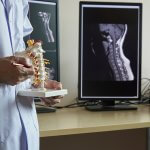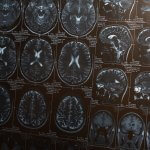Continuing with our contribution to Cord Blood Awareness Month, this week we are raising awareness of stem cells and cell potency.
Stem cells are the very building blocks of our bodies. At the moment of conception, a stem cell is made, a master cell which creates the lineage of cells needed to create a baby. As the cells continue to divide, after conception, they become more and more specialised, taking on roles dedicated to a more specific purpose. This process is called differentiation, the more specialised a cell becomes, the more its ability to differentiate into other cells diminishes and less potent it is.
After the baby is born, some stem cells continue to reside in your baby’s body which continue to help your baby grow, repair and regenerate their tissues when needed. However, as our body ages and is affected by elements so are the stem cells within it. As we age, the body sometimes needs a helping hand, this is the security offered by cord blood banking; stem cells which are a perfect match, saved in their prime and unaffected by the elements of an aged body.
There are three main types of stem cells in cord blood and tissue:
Haematopoietic stem cells (HSCs), from umbilical blood, which can produce red blood cells, white blood cells and platelets
Mesenchymal stem cells (MSCs), from umbilical tissue, which can produce connective tissue forming cells, fat forming cells, tendon/ligament forming cells, nerve forming cells, muscle forming cells, cartilage forming cells, and bone forming cells
Very small embryonic like stem cells (VSELs), found in cord blood a more recently discovered form of stem cell, with exciting possibilities for regenerative therapy
Different stem cells have different degrees of potency:
Totipotent Stem Cells: have the ability to produce all of the cells in the human body, including cells that make the placenta. These cells have the greatest ability of all cells to differentiate and create new cell types.
Pluripotent Stem Cells: As Totipotent Stem Cells divide, they become more specialised and lose the ability to become every cell in the body but retain the ability to become a large range of types of cell. These cells are called Pluripotent Stem Cells.
Multipotent Stem Cells: As Pluripotent Stem Cells divide they too become even more specialised and become limited to producing cells within a particular tissue group; these are called multipotent stem cells. For example some multipotent stem cells can produce the cells required to make red blood cells, white blood cells and platelets but they are unable to become bone cells or nerve cells.
Unipotent Cells: These cells only have the ability to transform into one kind of cell. For example; a red blood cell can only reproduce another red blood cell. These types of cells are not stem cells.
Throughout the week we will be using our social media channels to look further at stem cells and at cell potency. Our aim is to give a better understanding of the stem cells found in cord blood and to eradicate myths, misunderstandings and misconceptions.








